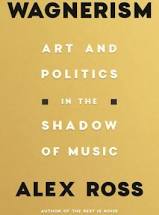Nathan Shields at The Baffler:
 Mann contended that Wagner’s art was neither monolithically grand nor sinister but deeply, violently ambivalent. He cited Nietzsche’s swing from filial devotion to Oedipal rebellion as a case in point. In his first major work, The Birth of Tragedy (1872), Nietzsche hailed his friend’s art in terms that fused Wagner’s own revolutionary rhetoric with Schopenhauer’s metaphysics of self-annihilation: it broke the “spell of individuation,” reopening the way to “the innermost heart of things.” But over the following decade Nietzsche shifted slowly from acolyte to skeptic, estranged by Wagner’s growing nationalism, the spectacle of Bayreuth, and his own changing intellectual needs. The final breach, he wrote, was precipitated by the self-betrayal of Parsifal, in which “Wagner, seemingly the all-conquering, actually a decaying, despairing decadent, suddenly sank down helpless and shattered before the Christian cross.” Later, in The Case of Wagner (1888), Nietzsche concluded that there had been nothing there to betray in the first place. Wagner had always been a disease, a toxin, and a neurosis, even before the encounter with Schopenhauer. “Only the philosopher of decadence gave to the artist of decadence—himself.”
Mann contended that Wagner’s art was neither monolithically grand nor sinister but deeply, violently ambivalent. He cited Nietzsche’s swing from filial devotion to Oedipal rebellion as a case in point. In his first major work, The Birth of Tragedy (1872), Nietzsche hailed his friend’s art in terms that fused Wagner’s own revolutionary rhetoric with Schopenhauer’s metaphysics of self-annihilation: it broke the “spell of individuation,” reopening the way to “the innermost heart of things.” But over the following decade Nietzsche shifted slowly from acolyte to skeptic, estranged by Wagner’s growing nationalism, the spectacle of Bayreuth, and his own changing intellectual needs. The final breach, he wrote, was precipitated by the self-betrayal of Parsifal, in which “Wagner, seemingly the all-conquering, actually a decaying, despairing decadent, suddenly sank down helpless and shattered before the Christian cross.” Later, in The Case of Wagner (1888), Nietzsche concluded that there had been nothing there to betray in the first place. Wagner had always been a disease, a toxin, and a neurosis, even before the encounter with Schopenhauer. “Only the philosopher of decadence gave to the artist of decadence—himself.”
more here.
